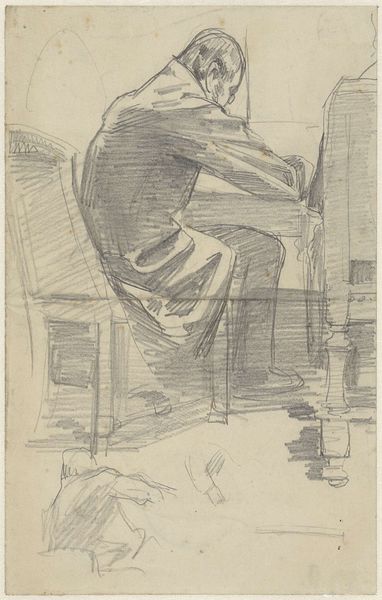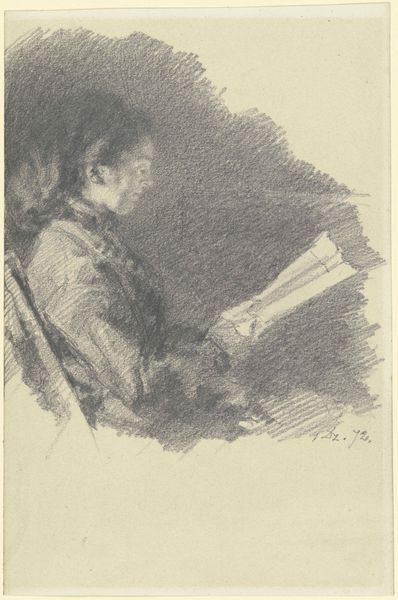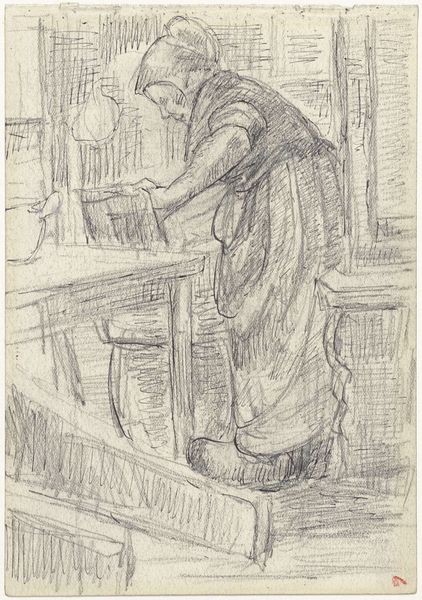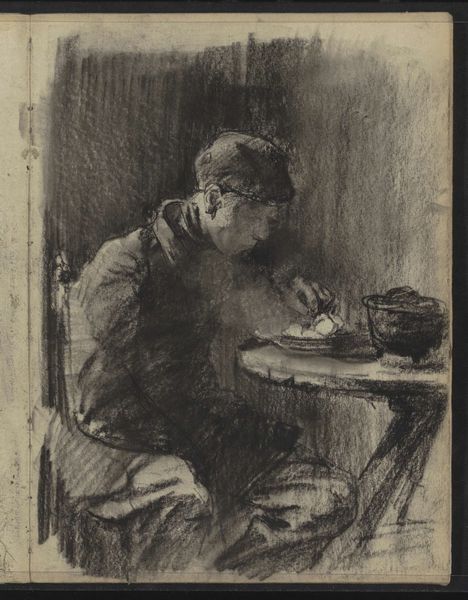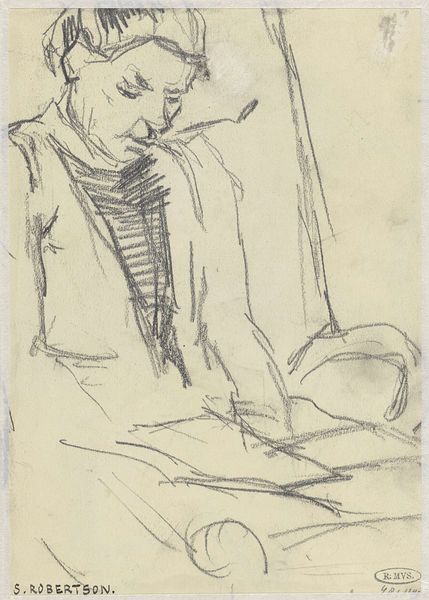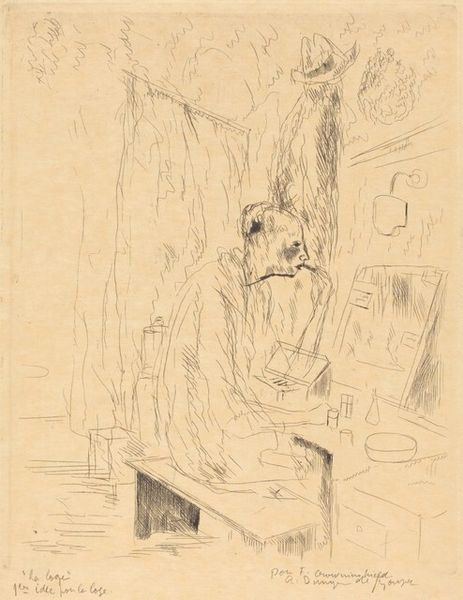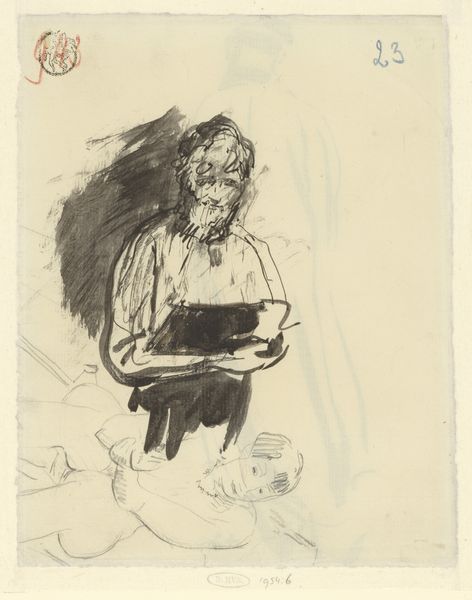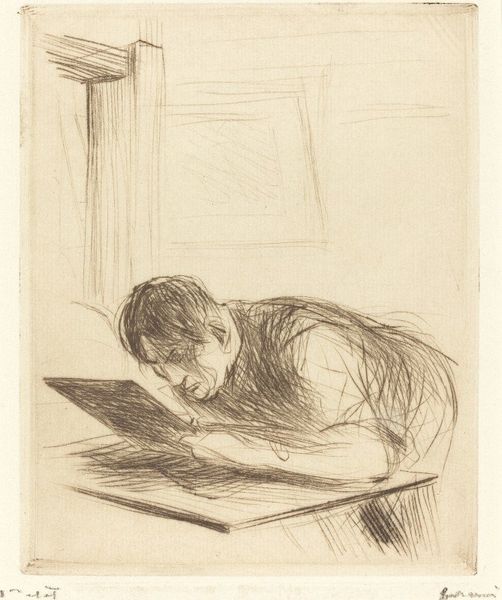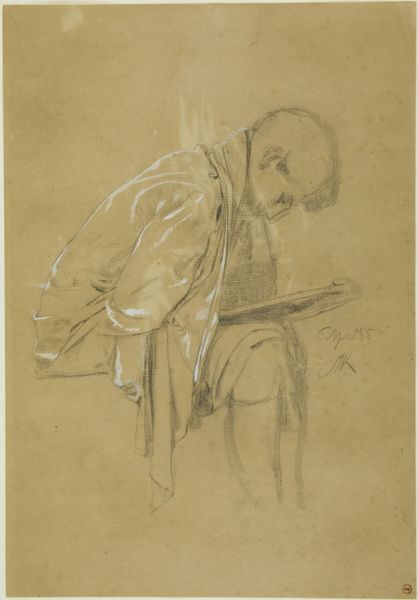
drawing, paper, pencil
#
portrait
#
drawing
#
pencil sketch
#
paper
#
pencil
#
genre-painting
#
realism
Dimensions: height 126 mm, width 181 mm
Copyright: Rijks Museum: Open Domain
Curator: Jozef Israëls created this drawing, "Standing Woman in Interior," sometime between 1834 and 1911. It’s currently held here at the Rijksmuseum, rendered with pencil on paper. Editor: There’s a raw intimacy to this piece. It feels immediate, like a snatched moment rather than a posed portrait. The subject, head bowed, is completely absorbed in some unseen task. It conveys a quiet dignity. Curator: Israëls, of course, was celebrated for his commitment to Realism and genre painting. He came to be seen as one of the key members of the Hague School and sought to elevate the image of the rural poor, reflecting broader social shifts toward recognizing working-class experience. Editor: I see echoes of earlier traditions of representing female figures: The woman’s cap, her posture… she's a Madonna of the everyday. It speaks to archetypes of labor, domesticity, and even sacrifice. Notice how her bent posture evokes a sense of burden, aligning her to depictions of suffering or perseverance common throughout art history. Curator: Interesting observation! Indeed, we cannot look at an artwork in a vacuum; this drawing needs to be set in the period’s understanding of gender roles, class divisions, and artistic conventions, as the woman's apparent fatigue becomes a talking point around working conditions for women at the time. Editor: And yet, while the socio-economic context shapes the work’s reception, I think we are inevitably drawn to it by an ageless symbolism of dedication and the simple strength of a life lived with purpose. There's beauty in what some would overlook or demean. Curator: Indeed, seeing such images in our museum collections offers not only artistic exploration but provides valuable resources for engaging with our historical understandings of the past, class, and the people who made up Dutch society. Editor: Seeing the human captured by an artistic, emotional intelligence allows us to form some kind of empathic connection, transcending time.
Comments
No comments
Be the first to comment and join the conversation on the ultimate creative platform.

